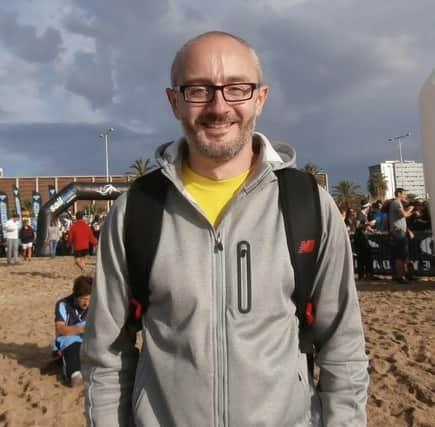John Feeney’s marathon training tips - week two


Each week we will be bringing you the training diary of endurance sport specialist John Feeney.
The 39-year-old, from Shoreham, is a sports science graduate and is currently studying for his MSc in Applied Exercise Physiology at the University of Brighton.
Advertisement
Hide AdAdvertisement
Hide AdHe is writing a weekly schedule on topics covering everything from running physiology and training to choosing the right footwear, recovery and tapering.
For week two, Feeney writes:
To be successful in sport, training should be structured in a way to optimise performance.
Training programmes are defined by volume, intensity and frequency. These variables determine the way your body adapts to training.
So, how do we structure training to maximise effort but still gain a sense of enjoyment and well being?
Advertisement
Hide AdAdvertisement
Hide AdWe all need to train hard in order to improve, but the relationship between training load and performance is individual.
Recreational athletes tend to have smaller training loads but benefit from large improvements in performance.
Conversely, more experienced athletes will require higher training loads in order to cause small increases in performance.
Initially, training will make you feel tired and activate physiological repair mechanisms within the body.
Advertisement
Hide AdAdvertisement
Hide AdWith adequate recovery, the fatigue will disappear and your body will adapt to the increased training load.
Recovery should be the bedrock of any training programme. People often skip a rest day as a result of missed training.
If you continue to train when tired, your body will suffer increasing levels of stress which could lead to further fatigue, over-reaching (short-term excessive training), possible over-training and under-performance.
We then find ourselves in a vicious circle where training is increased in reaction to under-performance rather than increasing the recovery period.
Advertisement
Hide AdAdvertisement
Hide AdThe best way to ensure sufficient recovery is to take a cyclical approach to training. For example, you could train in a four week cycle.
This means training volumes/intensity gradually increase for the first three weeks before a recovery phase in the fourth week. This will ensure adequate recovery without having a detraining effect.
Finally, your training philosophy should never compromise quality for quantity. If you feel too tired to train at the appropriate intensity, take a rest rather than complete the session sub-optimally.